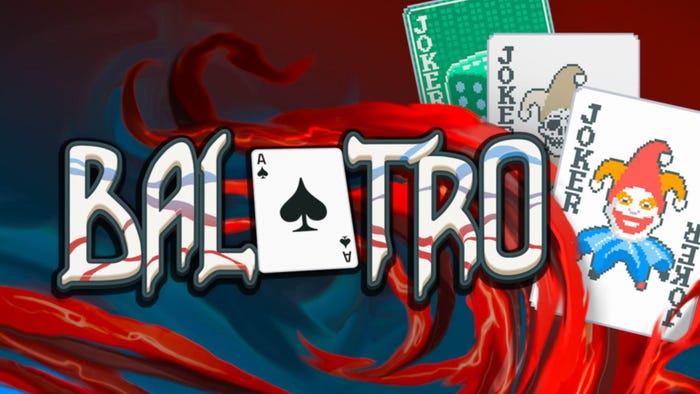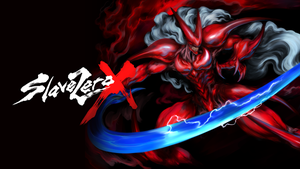The Ogre Battle Games: SRPGs of Lordly Caliber
A look back at the "Ogre Battle Saga" games (1994-2002) and the worlds they created.

This is a reblog of a post from gamemakeworld.wordpress.com
There are five games in the “Ogre Battle Saga” series. (Four have been released in English, but there is a mysterious Japan-only fifth one that I have never been able to get my hands on…) The main four that I will discuss are “Ogre Battle: March of the Black Queen” (SNES, 1993), “Tactics Ogre: Let Us Cling Together” (SNES, 1995), “Ogre Battle: Person of Lordly Caliber” (N64, 1999), and “Tactics Ogre: The Knight of Lodis” (GBA, 2001).
Each falls into one of two different styles: A) a real-time strategy simulation where groups of characters fight together as units (“Ogre Battle” games), or B) more traditional turn-based combat on a grid where characters act individually (“Tactics Ogre” games).
But they all have a few things in common:
1) Serious tone and themes about “war” and “morality,” with multiple story-lines and endings.
2) A large number of generic characters that evolve over the course of the game based on player’s actions.
3) Strategic combat on large maps where features like terrain, time of day, and weather have an impact.
Worldview: Strategic stewardship of an army in a vast, serious world.
Your actions and decisions feel imbued with moral weight that manifests itself in the your gradually growing and evolving army.
DEAD SERIOUS TONE
The Ogre games feature stories and characters that take themselves very seriously, tackling themes like loyalty and morality with plenty of heavy-handed dialogue. The stories usually focus on characters’ helplessness in the midst of forces beyond their control, and their struggles to do the “right thing” when there is no one right choice. Since most other games have a comic relief character or at least a few jokes here and there, the serious tone in the story and dialogue is somehow refreshing and endearing.

Dramatic cut-scene with Cybil in “Knights of Lodis”
The serious tone carries over to the realistically-rendered character portraits, which are plain, rarely smiling, and could even be called drab. Again, compared with the colorful and dynamic portraits in most other RPGs, this gives the game a distinct feel of its own.


No smiling allowed in Zetegenia!
BIG MAPS THAT MATTER
Whether an “Ogre Battle” or “Tactics Ogre” game, the combat system involves large maps where terrain type, element, time of day, and even weather affect the battle.
Characters’ class affects how they move and which type of terrain they are most effective on, while time of day and weather affect which characters and actions are most effective. Items (as well as towns in the case of Ogre Battle) are hidden around every stage, encouraging exploration and making mobility an important factor.

When units get near each other they have to “fight it out”!
With all the factors involved, every stage is different in terms of how each character will fare. Generally you’ll need a variety: flying characters for quick movement, characters that can move quickly on mountain terrain to reach remote locations, and water-type characters to reach islands. (Though I do feel that the water classes rarely get much of a chance to shine in any of the games… sadness).

I love octopi, but oceans and lakes aren’t always easy to come by…
Generally you can’t just throw out the same powerful characters in every situation, and sometimes you can really get caught in a pickle by environmental factors. In “March of the Black Queen,” a lot of this is offset by a limited supply of tarot cards that can massively change the course of battle in case of emergency.

In the unique tarot card system of March of the Black Queen, you receive a card every time you liberate a city and can use it for devastating effects in battle
STEWARDSHIP OF AN ARMY
What many fans undoubtedly enjoy most is managing the characters and units in their army. For the most part you manage generic characters that can be recruited throughout the game, and early on you will have a lot of the same starting classes (“soldier” for males, and “amazon” for female). But, due to the large number of classes they can change into, in the end you usually have only have one or two characters of the same class, so they still end up feeling one-of-a-kind and special.
New classes can be added to your army in a number of ways throughout the game, and a large part of the joy of the series is in trying to obtain a specific class through a side quest, waiting to see what a lowly soldier will become, or stumbling upon a new creature and trying to recruit it. The games even allow you to recruit enemies in the middle of battle by “persuading” them, with success dependent on the class, alignment (how good/lawful or evil/chaotic they are), and other factors of each character.

That feeling when you persuade the enemy…
The various classes also affect each other in a number of ways. For example, all the games feature a “beast tamer” class that boosts the power of gryphons, octopi, and other beast-type allies nearby, the same being true for dragon tamers and dragons. Similarly, characters’ element, alignment and class affects the damage dealt to and chance to persuade enemies.
Actually, the way you use characters in battle alters their alignment. Attacking evil or higher level units raises a character’s alignment, while relying on high level characters to kill enemies slowly turns them evil.

Killing ghosts and other evil characters raises your alignment
This character system makes your army feel connected to and affected by the epic battle going on around you. Your actions and playing style determine the make-up of your army, and as it develops you’ll need to assemble characters into effective groups where they can best use their unique skills. This is the joy of stewardship that has earned such a following for the Ogre Battle Saga series.

So many units, so few rare items!
Of course, individually equipping and keeping track of 20+ units can border on tedious micro-management, but the games are generally playable with minimal attention to classes and equipment. If you want to fine-tune your army there is plenty of depth and complexity, but taking things as they come generally works fine (except in “Let Us Cling Together”…). Also, most of the games’ systems are not only complex but also somewhat hidden in that you’ll need a FAQ to really see all that the game has to offer.
SUMMARY
Though varying greatly between two gameplay systems and various consoles, the Ogre Battle Saga games focus on the joy of taking stewardship over a large army, which at the same time feels small in the vast and epic worlds and stories that the games create.
On a game-by-game breakdown, I’d say that:
“Ogre Battle: March of the Black Queen” is the roughest around the edges (it’s also the first in the series). A lot of things go unexplained, and the equipment system is bare bones. Still, it has some of my favorite in-battle sprites, I love the tarot card system, and, maybe it’s because it was the first Ogre game for me, or maybe it’s because the bare-bones minimalism is strangely appealing, but March of the Black Queen is probably my favorite Ogre game.
I think “Knights of Lodis” is the stronger Tactics game, but if you like grid-based strategy games you really can’t go wrong with either one. Be warned that “Let Us Cling Together” is incredibly punishing with its perma-death system and tough enemies.

Let Us Cling Together was remade for the PSP with beautiful character portraits
“Ogre Battle: Person of Lordly Caliber” is the weakest link for me. The battle system is super unbalanced and the graphics are not my cup of tea. Still, I played all the way through and mostly enjoyed it (the game doesn’t totally fly off the rails until the end).

Painful graphics (IMHO) in Person of Lordly Caliber
I wish I could speak for the elusive “Prince of Zenobia: Let Us Walk on Together So As Not to Lose Our Way” for Neo Geo Pocket- let me know if you have played it! There have also been rumors of another entry in the series for awhile now… Let’s hope they come true someday.
SIDE NOTE: Apparently the title “March of the Black Queen” and other names in the series are references to songs by the British band Queen. Who knew!
Read more about:
BlogsAbout the Author(s)
You May Also Like












